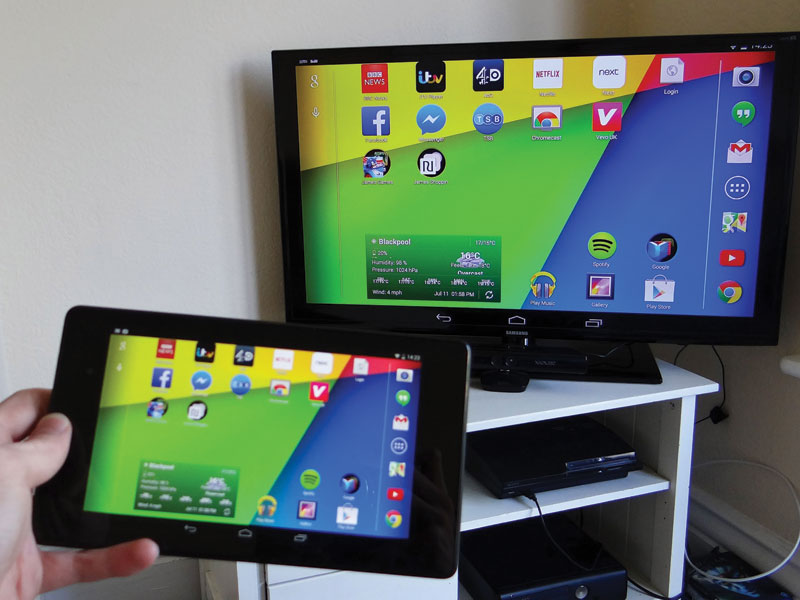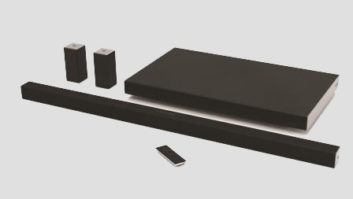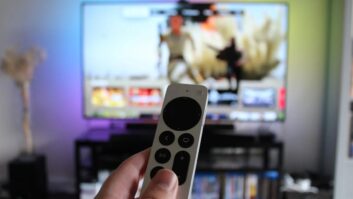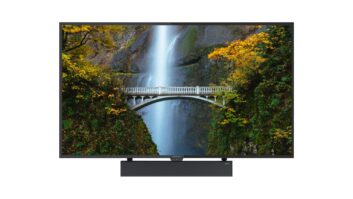
Google Cast technology is emerging as major competitor to smart TVs.
In recent weeks, P&F USA’s Philips and Magnavox brands, Empire Electronics’ Polaroid brand, and Westinghouse announced plans to embed Google Cast technology in 4K TVs in lieu of a full-fledged smart-TV platform. They’re joining Vizio, which was the first company this year to roll out Google Cast-equipped 4K TVs.
Google Cast TVs leverage the technology used in the popular Chromecast streaming adapter to access Cloud-based audio-and video-streaming services via an Internet connection.
Unlike smart TVs running a smart-TV OS, streaming apps aren’t stored on a Google Cast TV. Instead, the TVs stream content from the Cloud via Google Castenabled apps running on a smartphone, tablet, Mac or Windows laptop, or Chromebook.
For second-and third-tier suppliers competing with smart TVs from such major vendors as Samsung and LG, Google Cast offers multiple advantages, analysts and Google Cast TV vendors said. They include:
• ready access to more than 1,300 apps, with thousands promised by Google, compared with the hundreds of apps available through most walled-garden smart-TV OSs (with such exceptions as Samsung, which offers about 1,100 apps, and Roku-OS-equipped TVs, which offer almost 4,000 streaming channels);
• consumers’ familiarity with the interfaces on their existing Cast-enabled smartphone apps;
• the ease of interacting with a hand-held touchscreen compared with interacting with a TV screen that users can’t touch;
• the ability for guests to send content from subscription-based apps that a homeowner might not have;
• a higher frequency of smartphone app upgrades, delivering new features and a better user experience, because of more frequent advances in smartphone performance and smartphone OSs;
• relief from high content-development costs that, combined with limited ROI, are difficult for suppliers to shoulder, especially smaller suppliers; and
• cost benefits.
Economics debate: “I have heard from some sources that it [Google Cast] is a very economical solution and suspect that co-makership between some leading IC vendors and Google has been the cause,” said IHS analyst Paul Gray.
Added David Watkins of Strategy Analytics, “Cost saving is a significant advantage, and such a solution will be very attractive to a tier two or three brand looking to target the more budget-conscious consumer.”
At least one supplier, however, is not so sure that Google Cast offers a cost advantage over embedded smart-TV platforms. “Google Cast does require robust processing,” the supplier told TWICE. “Google requires certain minimum standards for Wi-Fi, and you have to include Bluetooth for initial setup. A lot of TVs lack Bluetooth, adding to costs.”
Smart-TV longevity: Despite the growing selection of Google Cast TVs, analysts don’t expect smart TVs to disappear anytime soon. “Traditional smart-TV OSs are unlikely to disappear in the short-to-medium term,” said Futuresource analyst David Tett, because Samsung and LG, which account for over 35 percent of the total TV market, “show no signs of foregoing their first-party systems in favor of third-party systems for their sets.”
In addition, smart-TV OSs offer some advantages as well. Select smart TVs from LG, Samsung and Sony, for example, run apps to control smart-home systems or view security-camera video on the TV.
App growth: For Google Cast TV vendors, app selection is a key advantage, enabling some TV makers to jump quickly from offering a few hundred apps to more than 1,300 without shouldering development costs. That’s due in large part to the popularity of the Chromecast dongle, said Futuresource’s Tett. “Google’s Chromecast, originally released in 2013, has seen more than 20 million in sales since launch,” he explained. With Google Cast, “instead of TV vendors requiring developers to build apps compatible with their own proprietary smart-TV OSs, TV vendors are able to use apps that will have been developed for the large Chromecast installed user base. This means that there will be a large selection of apps available to users, which will be kept up-to-date frequently, while also helping to reduce internal costs to the vendor for maintaining its own smart-TV platform.”
Tett also sees consumers’ familiarity with apps they already use on their smartphones as boosting Google Cast TVs’ fortunes. As ownership of multiple CE devices grows, “the value of consistent experiences across devices grows with it,” he said.
Obsolesence: Quicker app upgrades are another Google Cast bonus. “The rate of tech and app upgrades in mobile outpaces the TV space by a factor of three or four to one, which manifests as a better experience on mobile devices,” Tett said.
IHS’s Paul Gray agreed. “The long service lifetime of a TV means that any smart-TV function is likely to be obsolete in four years or so, and a mid-life upgrade with a small streaming box is necessary,” he said. “This is the same for any device. My first-generation iPod Touch, for example, no longer works with iTunes.”
“Regardless of the market position and cost of a smart TV, the smart functionality will be obsolete long before the set ends service,” he continued. “In addition, interacting with a screen you cannot touch is hard.”
Firmware upgrades to smart TVs aren’t enough to enable robust app updates over the longer term, Gray noted. “In the end, the decoding demands move on, and the CPU and memory cannot keep up,” he explained. “Firmware is not enough. For the same reasons, we replace our phones every three years or less and PCs at, say, five.”
With solutions such as Google Cast, added Watkins, “Vendors will be able to refocus on developing and improving picture quality, which remains the No. 1 feature that consumers think about when buying a TV.”













